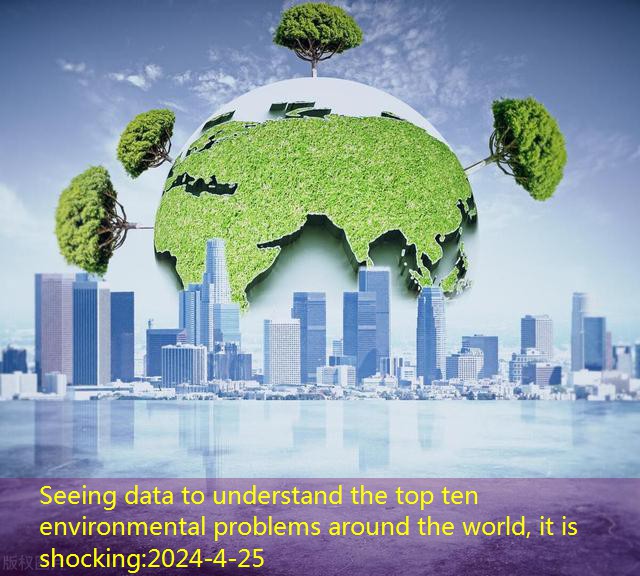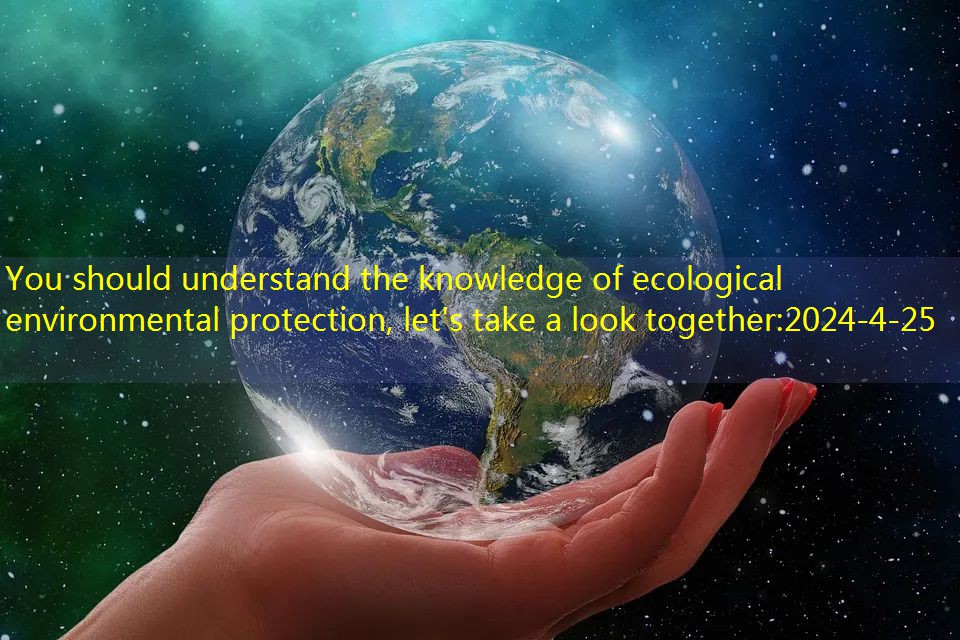1. Global climate change
In the past 30 years, the thickness of the Arctic ice layer has been reduced by 40%, from the original 3.1m to 1.8m.With 91%of the world’s Antarctic, 5 major ice cubes have been separated from land and flows into the ocean.From 1973 to 1993, the ice layer in the west of the Antarctic Peninsula decreased by 20%.The iceberg of Ganges is disappearing at a rate of 30m per year.If the temperature of the earth is higher than 1 ° C, the fragile ecosystem will bear the disaster of the top, and the polar bears, seals, and walrus will be on the verge of extinction.

Second, the loss of biological diversity
At present, 50,000 to 80,000 creatures in the world disappear from the earth, and 12%of mammals and 11%of birds are endangered.There are 150 to 200 species extinction every day, and 6 to 8 species per hour are extinct.According to the International Plants Conference, humans have destroyed nearly 1/2 of the earth, and 3100 kinds of animals and plants are on the verge of extinction.It is estimated that by the second half of the 21st century, the loss of wild creatures around the world is estimated to reach 15 % -30 % of its total.Humans are on the edge of the sixth biological tide.

Third, odor layer loss and destruction
Ozone (O3), has a special odor, so it is named.In the high level of the atmosphere of 10 ~ 50km, long waves of ultraviolet rays can sterilize, and medium -wave ultraviolet rays are harmful to the human body and biological.When it passes through the flow stratum, most of them are absorbed by the ozone layer.Therefore, the ozone layer has become a natural barrier on the planet, so that the life on the earth is exempted from strong ultraviolet damage.The flight of nuclear explosion and jet aircraft in high altitude reduced the ozone there by 1%, and the ultraviolet strength reaching the ground increased by 2%.It is estimated that by 2025, ozone may be reduced by 10%.Studies have shown that the ozone content in the atmosphere is reduced by 1%, and patients with human skin cancer increased by 4%to 6%; and the increase in ultraviolet rays that illuminates the earth will also destroy biomolecular molecules including DNA, increase the probability of leukem, and cause the probability of internal internal barriers.Many diseases related to immune systems.Ozone is reduced by 1%, soybean production is reduced by 1%; decreased ozone can cause fishery to reduce production -ozone reduction by 10%(increased by 20%of ultraviolet radiation) will kill all eel fish that live in 10m of water within 15 days.

Fourth, land desertification
The global land area accounts for 60 %, of which the area of desert and desertification is 29 %.Each year, 6 million hectares of land become desert.Economic losses are $ 42.3 billion per year.There are 5 billion hectares of drought and semi -arid land worldwide, of which 33 million are threatened by desertification.As a result, 6 million hectares of farmland and 9 million hectares of pastoral areas are lost each year.According to the “Global Environment Outlook (4)” report, about 2 billion people rely on the ecosystem of arid areas, 90%of which live in developing countries.In the world, more than 30%of the total land area is dry land, of which 30%have degraded, and the world’s 20,000 to 50,000 km2 land degradation is degraded each year.my country’s desertized land area is 2.622 million KM2, accounting for 28%of my country’s land area.At present, my country’s land desertification is expanding at an average of 2460km2 per year, which is equivalent to losing a land area in a middle county in one year.

5. Atmospheric pollution
There are currently more than 100 types of air pollutants.Atmospheric pollution leads to 30-7 million people dying in advance due to smoke pollution each year, and 25 million children suffer from chronic laryngitis.Atmospheric pollution can also have adverse effects on the climate, such as reducing visibility and reducing solar radiation (according to information, the city’s solar radiation intensity and ultraviolet strength should be reduced by 10%to 30%and 10%to 25%compared with the rural areas, which leads to citiesThe incidence of diseased diseases increases; air pollution causes about 7 million people to die early each year, accounting for 1/9 of all deaths. Of the 10 people, 9 people breathe the polluted air.definition.

Six, water pollution
When the pollution substances entering the water body exceed the environmental capacity of the water body or the self -purification ability of the water body, the water quality deteriorates, thereby destroying the original value and role of the water body.Naturally, the second is artificial.So the clear water body turned black, bacteria breeding, fish dying, algae growing crazy, and more seriously, it was enough to nourish the water of the human body. It often caused people to be infected because it contains toxic substances, and even caused people to death.The shortage of water resources, the pollution of the water environment and the flood disaster of water constitute a water crisis that can destroy humanity.

Seven, sour rain spread
The acid rain is corrosive. The landing ground will damage the growth of crops, leading to withering forests, acidification of lakes, and fish death.At present, the area of acid rain areas is close to 1/3 of the land area.Its control has been included in the national green engineering plan.More than 18,000 large and medium -sized lakes in Sweden are currently acidified, of which about 4,000 acidification is serious, and aquatic creatures have been greatly harmed.In Canada, more than 14,000 lakes were destroyed, and more than 4,000 lakes were also on the verge of “death”.In the US acidified waters, it has reached 36,000 KM2, and 9,400 of 28 states of 1,7054 lakes were affected by acid rain and the water quality deteriorated.The losses caused by sour rain in the United States reached $ 25 billion.The world has formed three major acid rain areas in Europe, North America and China.The coverage area of China ’s acid rain has accounted for 30%to 40%of the land area, and the severe sour rain area has crossed the Yangtze River, spreading towards the Yellow River Basin, and Qingdao also monitored acid rain.The economic loss caused by acid rain to the country reaches 14 billion yuan per year.

Eight, marine pollution
The rising problem of sea levels around the world has also caused the shrinking of coastal lines and threats to marine coastal cities.Since the 1950s, with the rapid development of social productive forces and science and technology in various countries, the ocean has been polluted and damaged from different degrees from various aspects.as a result of.Human activities have also increased nitrogen and phosphorus in the offshore area by 50 % to 200 %; excess nutrients cause a large amount of coastal algae; the Baltic Sea, Beihai, Heihai, East China Sea (East China Sea) and so on.Ocean pollution has caused frequent tide, which destroys mangroves, coral reefs, seagrass, and reduces the offshore fish and shrimp, and the fishery loss is heavy.

Nine, forests sharply decrease
The green barrier of the earth -the forest is disappearing at an average of 4,000 square kilometers per year.Global forests are mainly concentrated in South America, Russia, Central Africa and Southeast Asia.These four regions occupy 60%of the world’s forests. Forests are the main body of the terrestrial ecosystem, which plays a decisive role in maintaining land ecological balance.However, in the past 100 years, the damage to the forest has reached a very amazing level.In the early days of human civilization, the 2/3 of the earth’s land was covered by the forest, about 7.6 billion hectares; the middle of the 19th century decreased to 5.6 billion hectares; in the late 20th century, it decreased sharply to 3.44 billion hectares, and the forest coverage fell to 27 %.Forest sharp decline has led to the six major ecological crises around the world.

10. Dangerous waste transfers
After the toxic and harmful substances enter the environment, some pollutants can have a chemical reaction in the environment and convert them into secondary pollutants, which will cause greater harm to ecosystems and human health.Many substances can be enriched, accumulated and transferred through the food chain, and eventually transmitted to the environment through the food chain.At present, two -thirds of urban residents nationwide live in a noise environment of exceeding the standard.Industrial solid waste and domestic garbage have accumulated 7 billion T. The phenomenon of “siege” of garbage is very common, and contaminated farmland has reached more than 150 million mu.

In summary, the problems and anxiety faced by the global environment are very complicated and diversified. The protection of the natural environment is urgent. It is the obligation of each of us on the earth.A little bit, protect the environment, start from daily!




